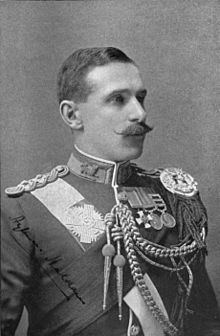Name Aylmer Haldane | Years of service 1882–1925 Allegiance United Kingdom | |
 | ||
Commands held 10th Infantry Brigade3rd Division6th Army Corps Battles/wars Second Boer WarWorld War I Books A brigade of the old army, 1914 Battles and wars | ||
General Sir James Aylmer Lowthorpe Haldane, (17 November 1862 – 19 April 1950) was a senior British Army officer with a long and distinguished career.
Contents
Early life
Born to physician Daniel Rutherford Haldane and his wife Charlotte Elizabeth née Lowthorpe, James Aylmer Lowthorpe Haldane came from a family of distinguished Scottish aristocrats based in Gleneagles. He was cousin to Richard Haldane, 1st Viscount Haldane, Secretary of State for War 1905-1912, instigator of the Haldane Reforms.
Military career
In September 1882, after attending the Edinburgh Academy and the Royal Military College, Sandhurst, Haldane was commissioned as a British officer of the Gordon Highlanders. On 18 February 1886, he was promoted to the rank of lieutenant, and on 8 April 1892 to the rank of captain.
Between 1894 and 1895, Haldane was part of the Waziristan Field Force and participated in the Chitral Expedition. He was dispatched to quell the Afridis rebellion in the Tirah campaign for the next two years (1897–1898), was appointed a Companion of the Distinguished Service Order (DSO) on 20 May 1898, and became aide-de-camp to the Commander-in-Chief East Indies later the same year. Haldane fought in the Second Boer War in South Africa, where he was taken a war prisoner. While imprisoned in Pretoria, he planned the escape which made Winston Churchill famous. Haldane failed to escape at the same time and later complained of Churchill's lack of regard for those who should have escaped with him. However, Haldane later managed his own escape.
Haldane was appointed a staff captain in the Intelligence Section at the War Office on 27 June 1901, promoted to major on 23 July 1902, and received the brevet rank of lieutenant colonel on the following day. He was military attaché with the Imperial Japanese Army from July 1904 to September 1905 during the Russo-Japanese War, and accompanied Japanese forces into Manchuria.
Promoted to brevet colonel, Haldane was appointed a CB on 16 March 1906, receiving confirmation as a substantive colonel in November. From 1906 to 1909, he served as assistant director of military intelligence. On 1 October 1909, Haldane was promoted to temporary brigadier-general and in 1910 become commander of 10th Infantry Brigade.
Haldane fought in World War I initially as General Officer Commanding 3rd Division, then part of the British Expeditionary Force. He was given command of 6th Army Corps in France in 1916.
After the end of the war, Haldane was appointed General Officer Commanding Mesopotamia 1920 remaining in that post until 1922; he retired in 1925.
Later life and death
Haldane died on 19 April 1950, at his home in London and was buried at Brookwood Cemetery.
Honours and decorations
Selected works
Haldane's published writings encompass 6 works in 8 publications in 1 language and 311 library holdings.
